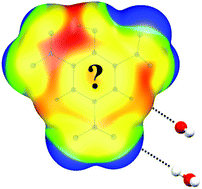Can the sensitivity of energetic materials be tuned by using hydrogen bonds? Another look at the role of hydrogen bonding in the design of high energetic compounds†
Abstract
Strongly positive electrostatic potential in the central areas of molecules of energetic materials is one of the most important factors that determines the sensitivity of these molecules towards detonation. Quantum chemical and density functional theory calculations were used to reveal the influence of hydrogen bonding on the values of electrostatic potential above the central areas of molecules of three conventional explosives: 1,3,5-trinitrobenzene, 2,4,6-trinitrophenol, and 2,4,6-trinitrotoluene. Both the case when energetic molecules act as hydrogen atom donors and when they act as hydrogen atom acceptors were considered. Results of the calculations performed using the M06/cc-PVDZ level of theory showed that there are significant differences in the influence of hydrogen bonding on the electrostatic potential of energetic molecules acting as hydrogen atom donors and hydrogen atom acceptors. In the case when energetic molecules act as hydrogen acceptors, an increase of 10% in the strength of positive electrostatic potential was identified. In the case when energetic molecules act as hydrogen atom donors, a significant decrease (20–25%) in the strength of the positive potential on the molecular surface was calculated. These differences give an opportunity for fine-tuning the impact sensitivities of energetic compounds and provide new guidelines for the design of explosives with desirable characteristics.

- This article is part of the themed collection: #RSCPoster Twitter Conference


 Please wait while we load your content...
Please wait while we load your content...